Product List
Contact Us
Email:qiao@hvtest.cc
Mobile:+8615871365102
What's app:+8615871365102
-
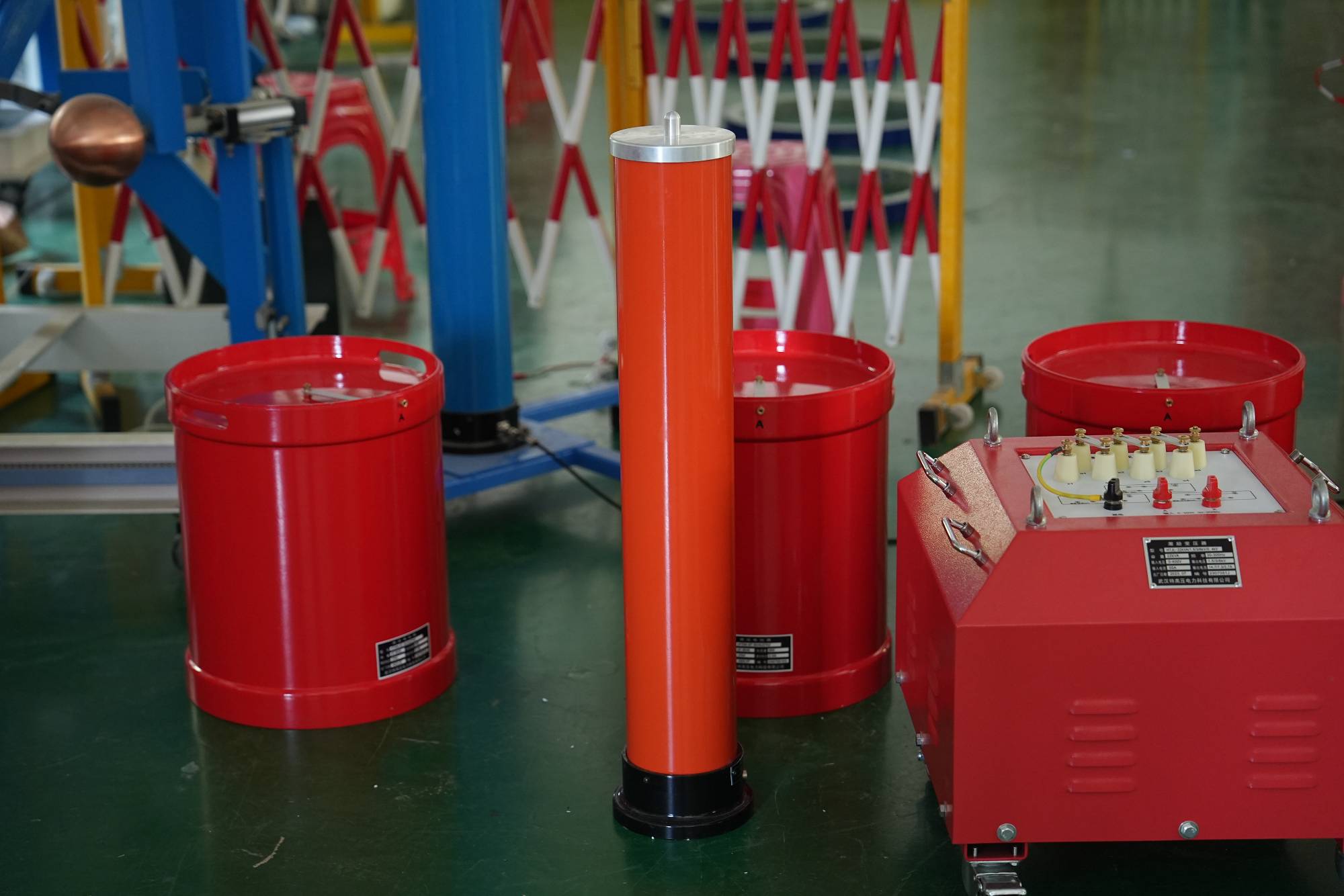
Several points to note when conducting AC withstand voltage test on frequency conversion series resonance test device
2025-09-28The method of conducting AC withstand voltage test with variable frequency series resonance test device is to change the inductance and frequency in the test circuit to make the circuit in resonance state. This method can meet the test requirements of high voltage and high current. When using the variable frequency series resonance test device for AC withstand voltage test, the following points should be noted:(1) Before the experiment, it is necessary to understand whether the non-destructive testing items of the tested equipment are qualified. If there are defects or abnormalities, the test should be conducted after cleaning.(2) Adjust the gap between the protective balls to a discharge voltage of 105% to 110% of the test voltage. Test three times in a row, there should be no significant difference, and check the reliability of the overcurrent protection device operation.(3) In the experiment, if it is found that the pointer of the voltmeter swings greatly and the test substance make
MORE -
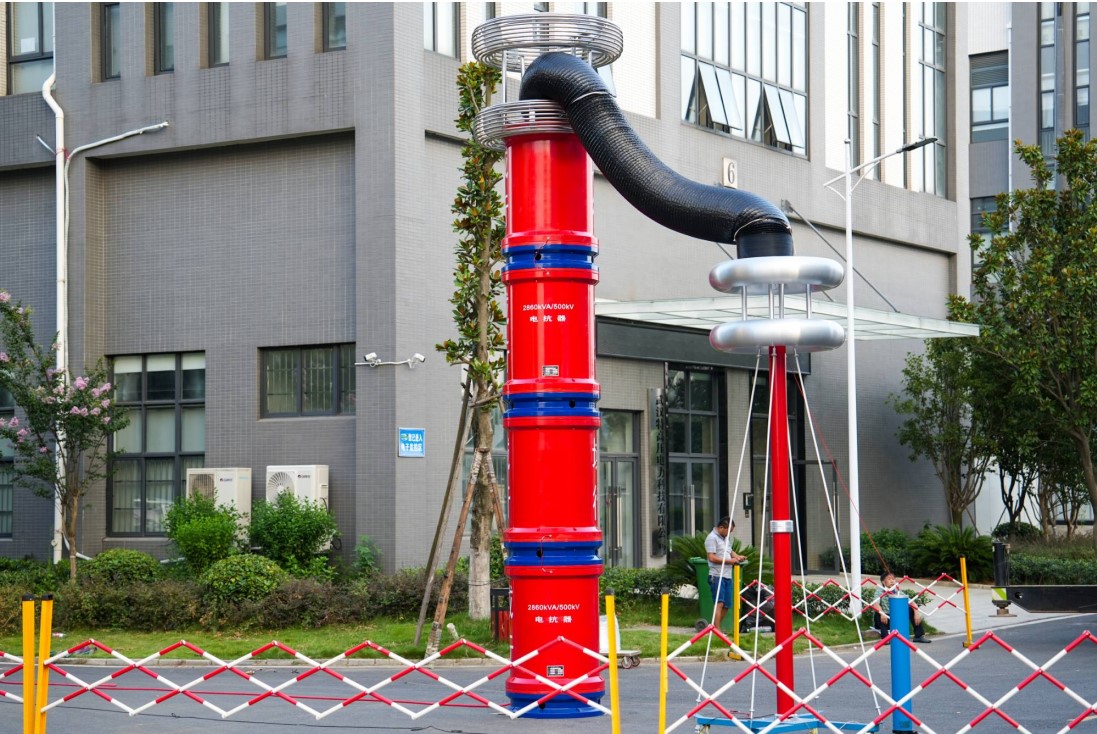
Series resonance compensation
2025-09-26Series resonance (also known as variable frequency resonance) compensation - a capacitor connected in series with the line can control the effective reactance between the two ends of the line. The effective reactance is given by the following equationIt is obvious that capacitors will reduce the effective line reactance. This leads to improvements in system performance as follows.(i) The voltage drop in the circuit is reduced (compensated), that is, the terminal voltage change is minimized.(ii) Prevent voltage collapse.(iii) Steady state power transmission increases; It is inversely proportional to X'l.(iv) Due to the increase in transient stability limit.The advantages and problems of series capacitor compensators are related. Capacitor reactance X c forms a series resonant circuit with the total series reactanceThe oscillation natural frequency of this circuit isF=system frequencyFor this level of compensationThis is subharmonic oscillation.Although series resonant compensation i
MORE -
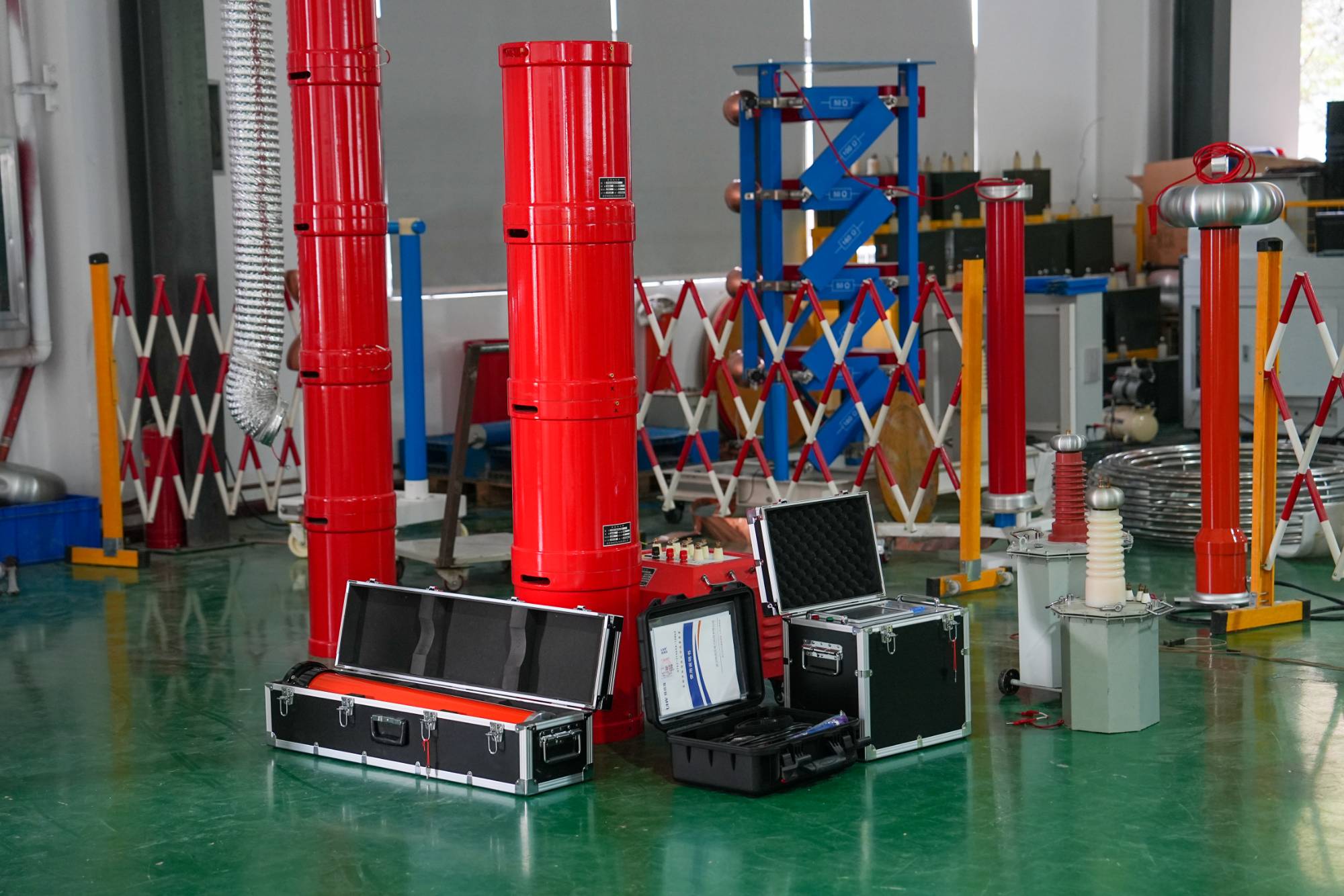
Frequency of series resonance
2025-09-26What is resonance? When the reactance of an inductor balances the reactance of a capacitor at a given frequency, resonance occurs. In this series resonant circuit (also known as series variable frequency resonant), the current will be maximum and the impedance will be minimum. In a parallel resonant circuit, the situation is exactly the opposite.Resonance formulaThe formula for resonance is:2 * pi * f * L = 1 /(2 * pi * f * C)Among them: 2 * pi=6.2832; F=frequency, measured in Hertz, L=inductance, measured in Henry, C=capacitance, measured in FaradsWe will continue:f = 1 / [2 * pi(sqrt LC)]Among them: 2 * pi=6.2832; F=frequency, measured in Hertz, L=inductance, measured in Henry, C=capacitance, measured in FaradsA particularly simple radio frequency formula (please make sure you understand it) is:LC = 25330.3 / f 2Among them: f=frequency, measured in megahertz (Mhz), L=inductance, measured in microhenries (uH), C=capacitance, measured in picofarads (pF)By using simple algebra, we can d
MORE -
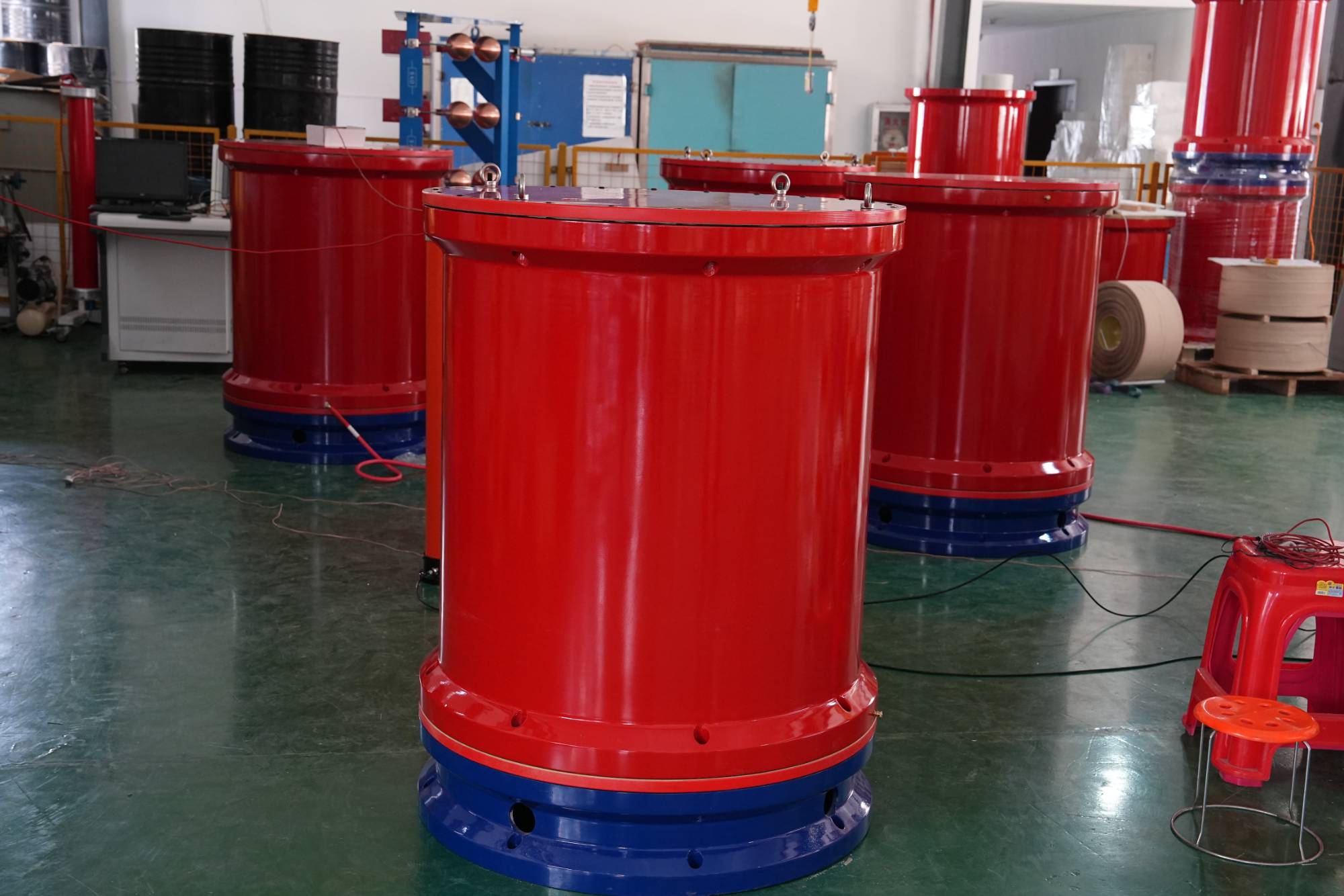
Series resonance in power systems
2025-09-26When the series combination of the inductance of the facility transformer and the parallel capacitor group in the facility resonates at the harmonic frequency injected from the distribution system, series resonance occurs. In this case, the facility itself may not be an important harmonic current generator, but due to the series LC combination "absorbing" important harmonic currents from the upstream distribution system, the equipment may still encounter resonant harmonic effects. Here is an example of a system that may experience series resonance.The voltage across the capacitor is amplified and distorted, which can be expressed as:Among them, Vh is the harmonic voltage present in the system. R is the inherent series resistance of the circuit above, not shown in the diagram. Note that the resonance values of Xt and Xc are equal and opposite in magnitude, thus canceling each other out.Application of Series and Parallel Resonance in Actual Power SystemsIn fact, due to the circuit topolo
MORE -
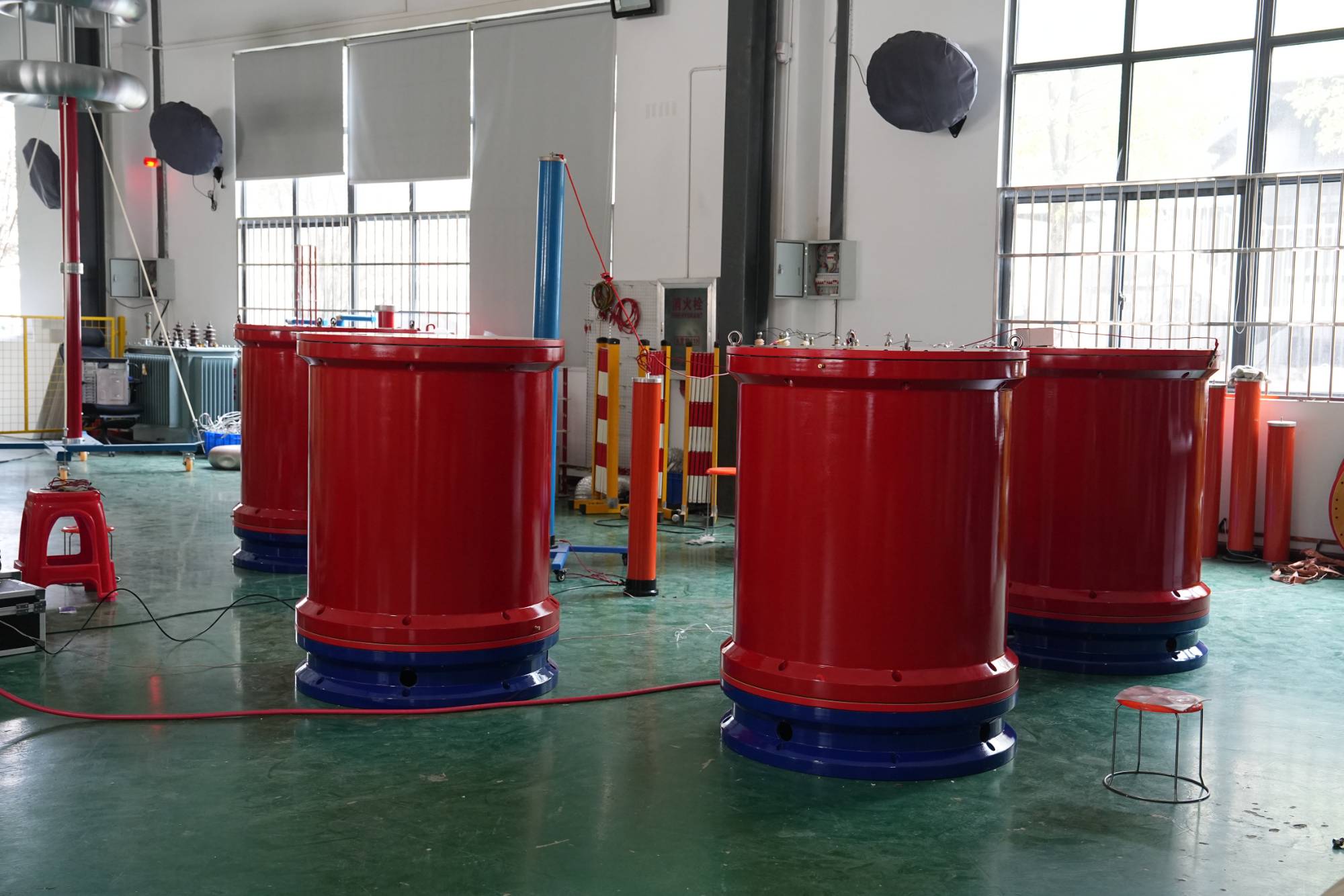
Introduction to series resonant circuit
2025-09-25The following figure shows a typical series resonance (also known as variable frequency resonance) circuit.In many cases, R represents the loss resistance of an inductor, and in the case of a hollow coil, it simply represents the resistance of the winding. The resistance related to capacitors can usually be ignored.The impedance of capacitors and inductors is fictitious and has opposite signs. Typically, for w0 L=1/w0C, the total imaginary part is 0, so the total impedance is R and w is 0 times. This frequency is the series resonant frequency.The general impedance characteristics of this circuit are shown in the following figure.When w0 L=1/w0, each frequency of series resonance: or frequency in Hz: F0This is the so-called Thompson formula.If R is smaller than X, then the reactance near the resonance frequency of L and X C is the series resonance frequency, and we say that the circuit has good selectivity.The selectivity of the quality factor Q is equal to the angular frequency We of e
MORE -
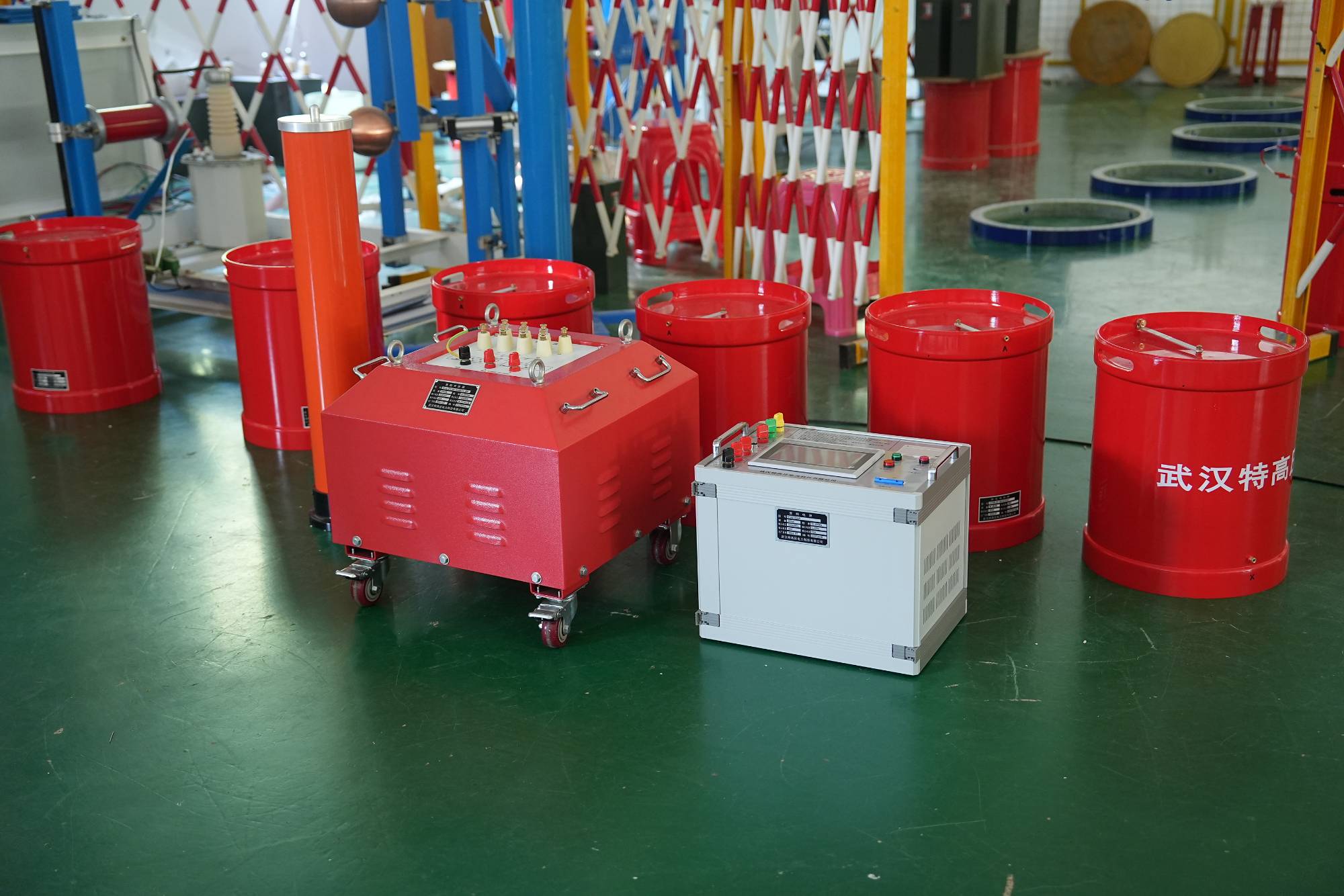
Q factor and bandwidth of series resonant circuit
2025-09-25The quality factor (Q) of a resonant circuit characterizes its quality. The higher value of this indicator corresponds to a narrower bandwidth (which is ideal for many circuits). Simply put, the quality factor is the ratio of the energy accumulated in the circuit reactance to the energy consumed by the active resistance of the circuit:If the resistor is connected in series with the inductor, this formula applies to both series resonant circuits and parallel resonant circuits. In fact, in practical circuits, we often worry about the resistance of inductors, which can limit the quality factor. Note: Some textbooks on parallel resonant circuits in the "Q" formula interchange X and R. This is correct for large R values connected in parallel with C and L, and our formula is correct for small R values connected in series with L.The practical application of Q factor (Q) is that the voltage across L or C in a series resonant circuit is Q times the total applied voltage, and in a parallel reson
MORE -
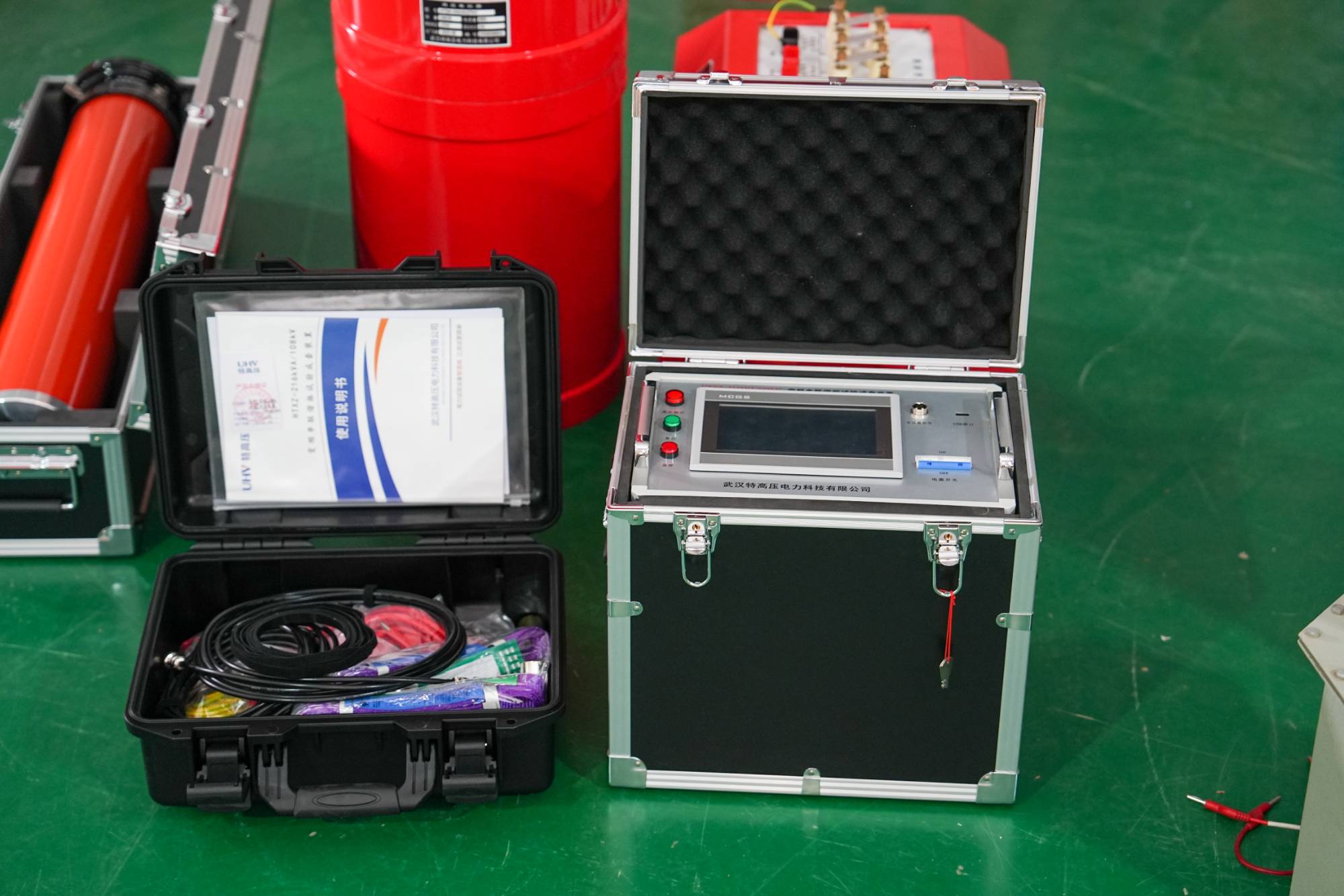
Forced oscillation in series resonant circuit
2025-09-25From the process of electrical engineering, it can be known that in a series resonant circuit containing inductance L, capacitance C, and active resistance R, voltage resonance occurs when the reactance is equal (X L=X C). When the frequency is e, resonance in the series circuit can be obtained. D is consistent with the frequency of free oscillation in the circuit.Normally, the current in a circuit is determined by rotationResonance (XL=XC)Therefore, in resonance, when ƒ=ƒ 0, a series circuit has a minimum resistance equal to the circuit and an active resistance of e.The quality factor of a series resonant circuit indicates how many times the voltage on its components increases during resonance compared to the e applied to the circuit. The frequency dependence of current in a series circuit is called the resonance curve of the circuit.The analytical expression for the road resonance curve isI am the current in the circuit; ƒ is the frequency of the applied e. ƒ 0=Δ ƒ - The detuning of
MORE -
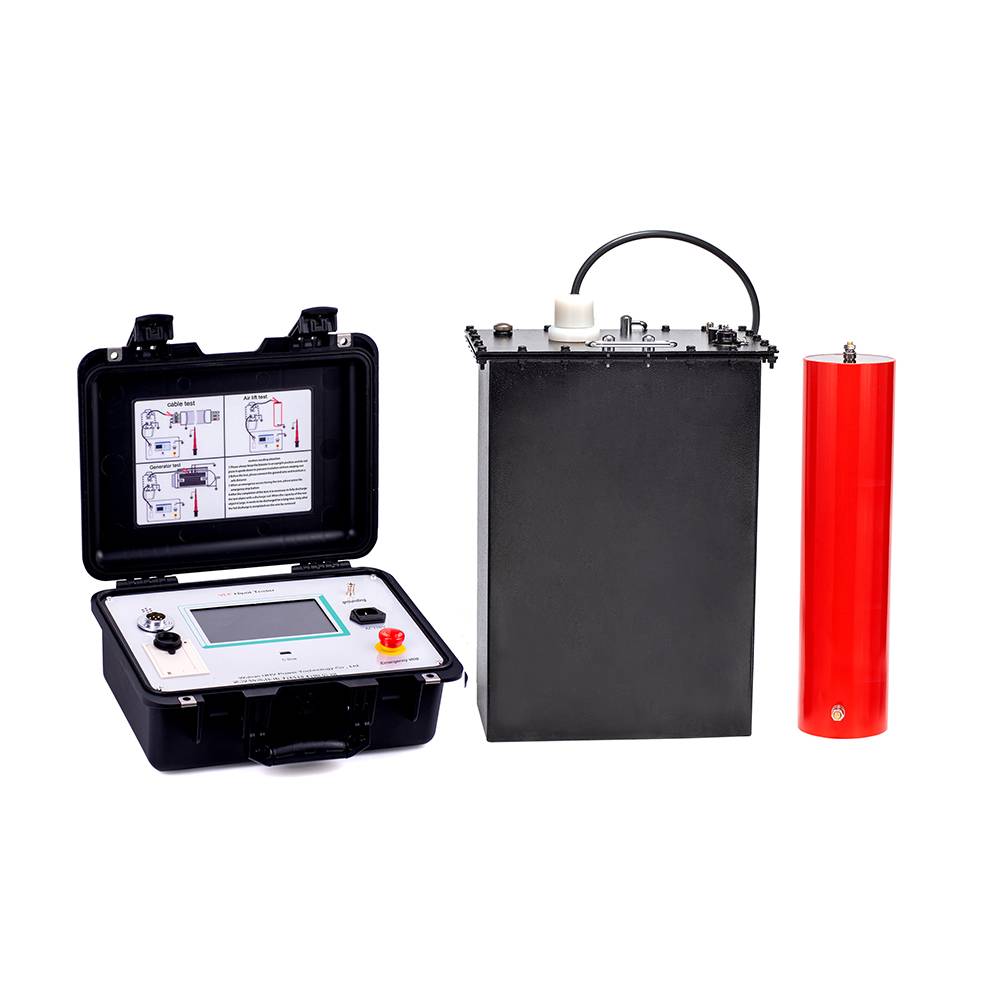
What are the core safety regulations for operating a VLF Hipot Tester?
2025-09-24The VLF Hipot Tester under Wuhan UHV can help many power workers conduct various power tests more conveniently.1. Pre-Test Preparation (The Foundation of Safety)Personnel: Operation requires two or more people. One operates, the other acts as a dedicated supervisor. The operator must be certified and familiar with the procedures.Site Isolation: Establish a clearly marked safety perimeter using barriers or warning tape, with "Danger, High Voltage" signs to prevent unauthorized entry.Reliable Grounding: The generator chassis and ground terminal must be securely connected to a qualified ground electrode using a dedicated grounding cable. This is the most critical safety measure.Status Check: Ensure the equipment under test (EUT) is completely de-energized and isolated from other equipment. Verify all test connections are correct and secure, and that the equipment's voltage regulator is at zero.2. During the Test (The Focus of Risk)Verbal Confirmation: Before any key action (e.g., "app
MORE -
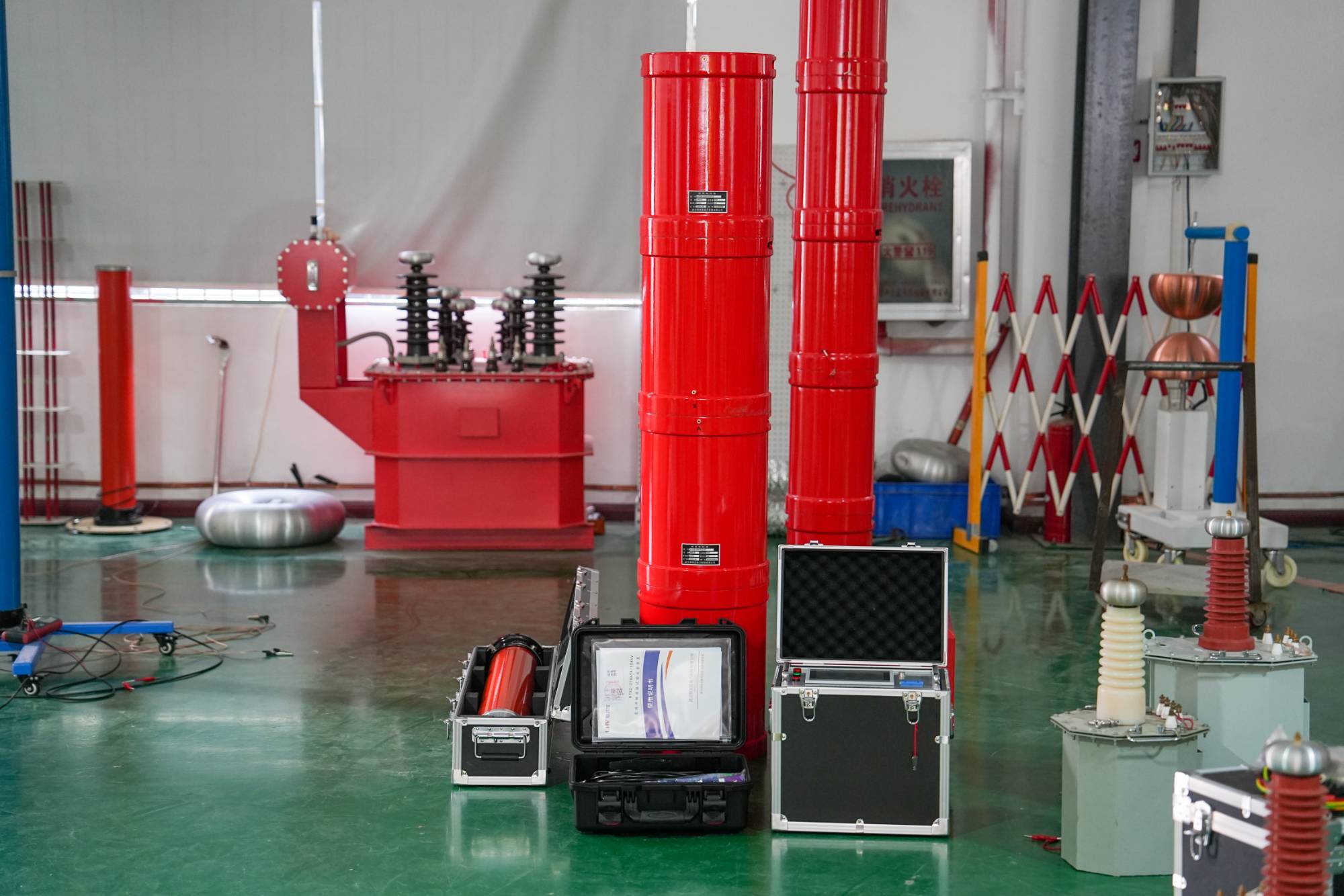
Power of series resonance
2025-09-24In a circuit where resistor A, inductor I, and capacitor C are connected in series, a phenomenon called series resonance may occur. When an inductor is connected in series with active resistor A and capacitor, resonance phenomenon will be observed.When there is series resonance in a circuit, the current and voltage are in phase, that is, the angleObviously, if the conditions for series resonance occur, this equality will occurThe reactance (X, X s) of the circuit is zero.The frequencies of b, C, and the applied sine voltage represent X b and X c, respectivelyTherefore, at=X c, series resonance occurs in the circuit because the resonant frequency is equal to the frequency of the voltage supplied to the circuit.According to Ohm's Law, the current in a circuit is:The analysis of this dependency shows that the current in the circuit during resonance (X b - X c=0) is equal to the voltage divided by the active resistance:The current in the circuit reaches its maximum value because impeda
MORE -
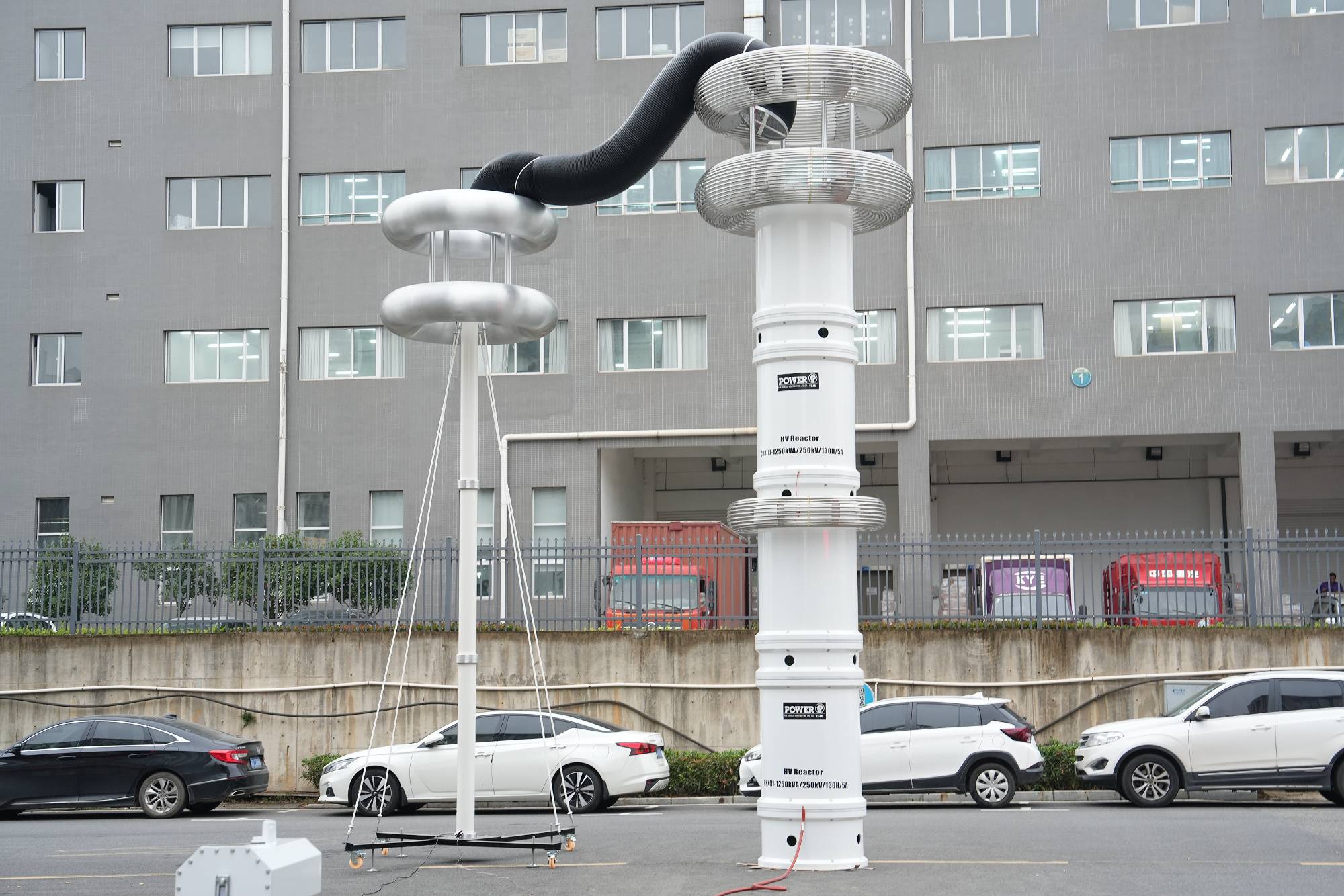
Inductance and capacitance of series resonant circuit
2025-09-24In a series circuit with R, L, and C, the applied voltage U is equal to the sum of the voltage drops across the resistor, inductor, and capacitor. We can find itSpecify the impedance of the circuit through the following methods:We can write Ohm's law for this circuit:In the considered circuit, when the load is an active inductor and an active capacitor.So what is the current in the circuitThat is, in this case, the circuit has the smallest possible resistance, as if it only contains active resistors. In this case, the voltages on the phase of the inductor and capacitor completely cancel each other out. The voltage applied to the circuit is equal to the voltage across the active resistor, and the current is in phase with the voltage. This situation is called series resonance (also known as variable frequency series resonance).Therefore, the condition for series resonance is that the inductance, capacitance, and resistance of the circuit are equal:The phenomenon of series resonance i
MORE -
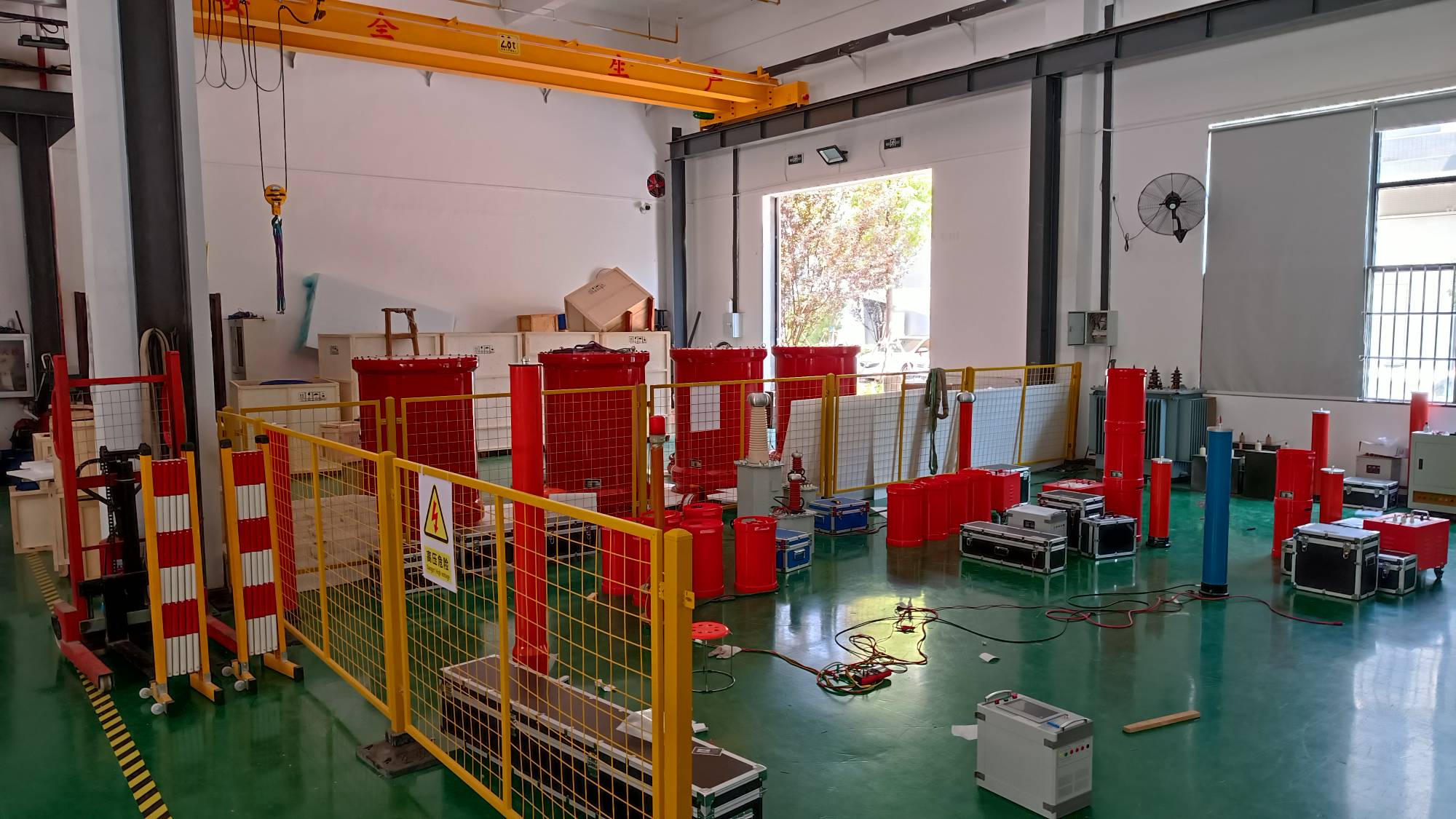
Resonance frequency of series resonance
2025-09-24Voltage resonance phenomenon is observed in a series resonant circuit composed of capacitors, inductors, and resistors. In order to ensure the energy supply of the resonant circuit, the series circuit also includes an electromotive force source E, which generates an alternating voltage with a frequency of W. During resonance, the circulating current in the series circuit must be in phase with the electromotive force. If only the total resistance of circuit Z=R+J (WL-1/W C) is activated, it ensures effective Z=R. Equality:(L-1 /WС)= 0(1)It is the mathematical condition for resonance in a resonant circuit. In this case, the current in the circuit will be I=E/R. If we transform equation (1), we obtain:WL = 1 /WС。In this expression, W is the resonant frequency of the circuit.Importantly, during the resonance process, the voltage across the inductor is equal to the voltage across the capacitor, and is:UL = U = WL * I = WLE / R The total amount of energy in inductance and capacitance (magnet
MORE -
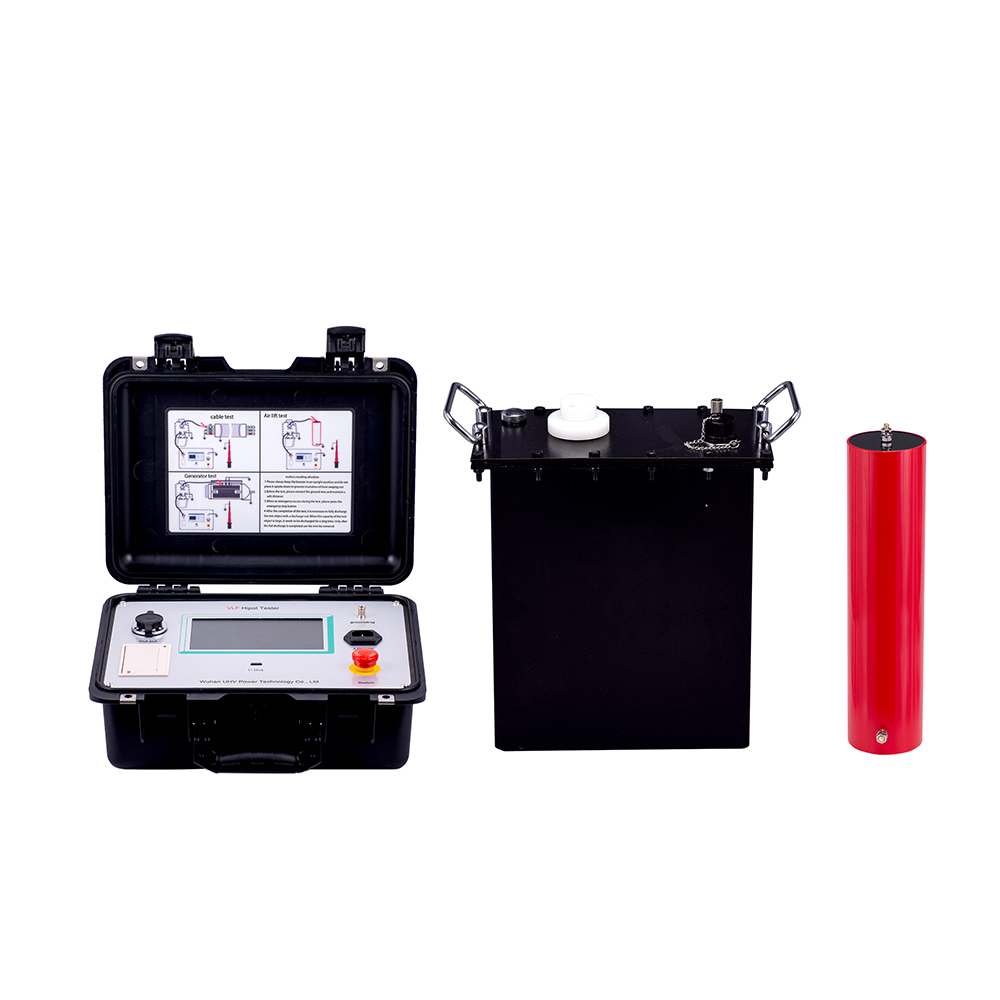
Precautions for the Use and Maintenance of VLF hipot tester
2025-09-23The VLF hipot tester is integrated with modern digital frequency conversion technology, using microcomputer control to boost, buck, measure, protect, automate, and can be manually intervened during the automatic boost process. Due to its full electronicization, this instrument is small in size and light in weight, with a large screen LCD display that is clear and intuitive. It can also display output waveforms and print test reports.1. Before using the instrument, first observe whether the appearance of the instrument is damaged. After powering on, check if the instrument head displays properly and if the display is complete. For instruments that have not been used for a long time, check if the output terminal is corroded or aged. Otherwise, they should be cleaned up in a timely manner before use. Please refer to the "Usage Operation" method when using.2. The VLF hipot tester is a precision electronic instrument that cannot be opened arbitrarily. When opening it, we must take relevant
MORE -
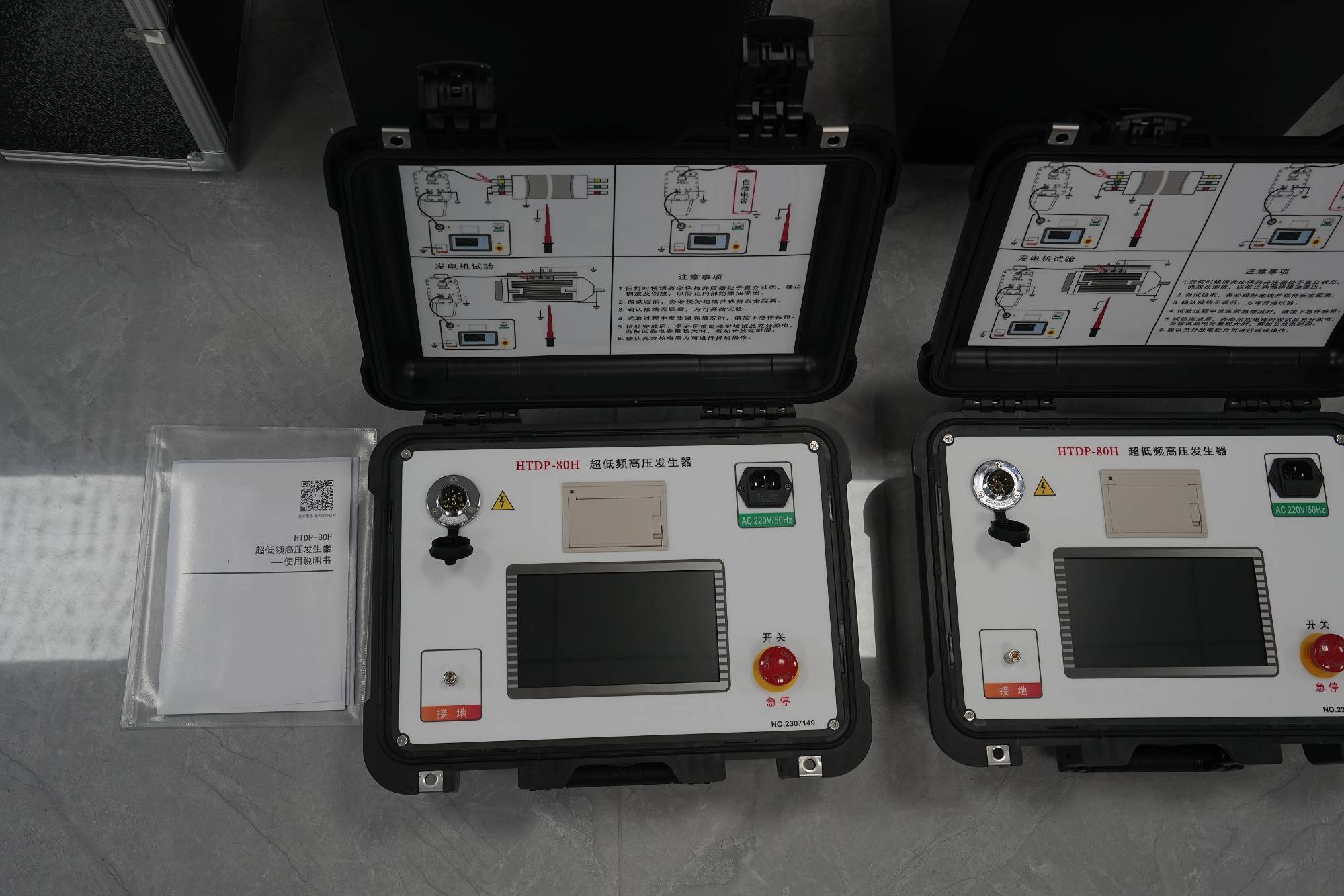
What are the specific application scenarios of 0.1Hz VLF hipot tester in power equipment testing?
2025-09-23The VLF hipot tester under Wuhan UHV can help many power workers conduct various power tests more conveniently.The 0.1Hz VLF hipot tester has a wide range of application scenarios in power equipment testing, mainly including:1. Voltage withstand test of power cables: Suitable for non-destructive insulation voltage withstand test of plastic power cables such as PE/XLPE, which are crucial for testing the insulation performance of the cables.2. Testing of large high-voltage rotating electrical machines: used for voltage withstand testing of large generators and motors to ensure the integrity and reliability of their insulation systems.3. Testing of power capacitors: Conduct AC withstand voltage tests on power capacitors to evaluate their insulation strength.4. On site voltage withstand test: Due to its small size and light weight, the 0.1Hz VLF hipot tester is very suitable for outdoor on-site testing, making it convenient to test the equipment in different locations.5. Preventive testing
MORE -
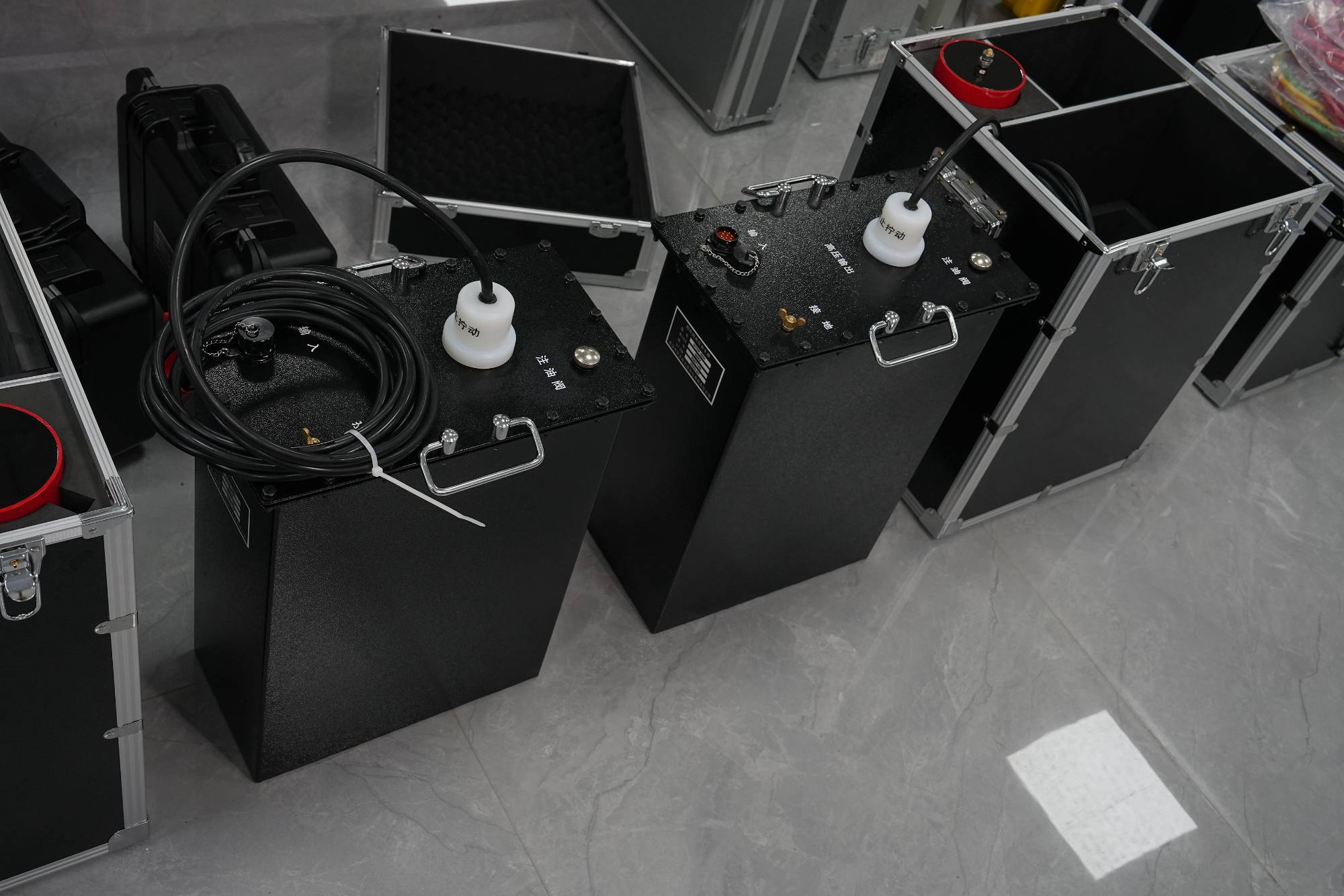
What equipment is primarily tested using a VLF hipot tester?
2025-09-23A VLF hipot tester is a crucial piece of equipment for high-voltage electrical testing.Its primary purpose is to substitute power frequency (50Hz/60Hz) high voltage for withstand tests, especially suited for electrical equipment with very large capacitance. For equipment with large capacitance, using traditional power-frequency test transformers for withstand voltage testing requires very large and heavy power supplies and transformers, which are highly inconvenient for field use.In simple terms, a VLF hipot tester is mainly used to test the insulation strength of power equipment with significant ground capacitance.The following are the most common types of equipment tested with VLF hipot testers:1. Power Cables (This is the most common and primary application)Types: Including cross-linked polyethylene (XLPE) cables, polyethylene (PE) cables, polyvinyl chloride (PVC) cables, rubber-plastic insulated cables, etc., covering medium-voltage cables from 6kV to 35kV and even higher voltage l
MORE -
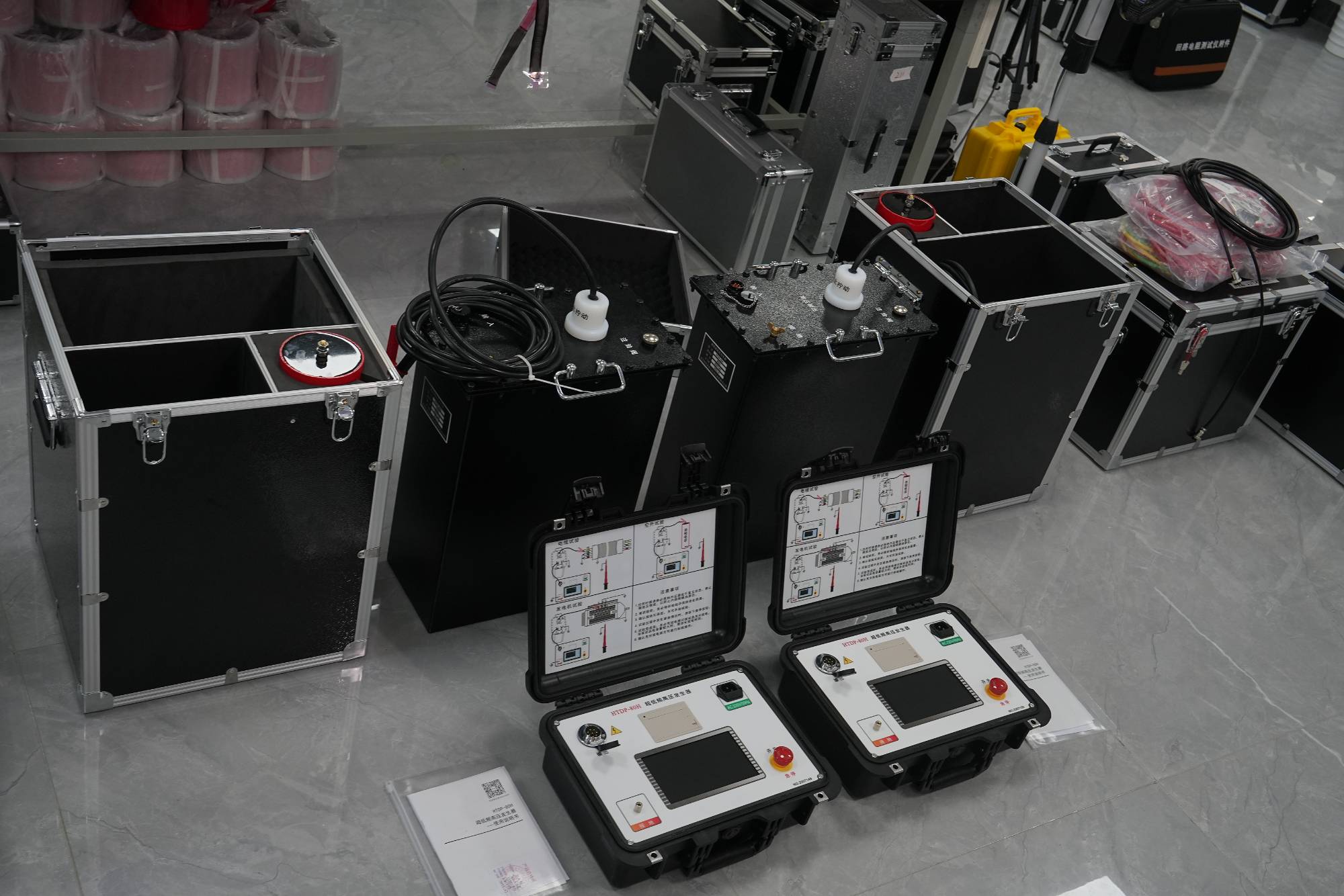
Working principle and application fields of VLF hipot tester
2025-09-23The VLF hipot tester under Wuhan UHV can help many power workers conduct various power tests more conveniently.1、 Working principleThe basic working principle of VLF hipot tester is to use the electromagnetic induction effect of high voltage transformer to convert low voltage alternating current into high voltage direct current. The workflow is as follows:1. The low-voltage AC power supply enters the high-voltage transformer, and through the electromagnetic induction effect of the transformer, the voltage gradually increases from low to high.2. Convert the AC power output by the transformer into stable DC power through circuits such as rectification and filtering.3. Part of the high-voltage direct current is divided by a voltage divider and output, which can be used in experiments or manufacturing fields.2、 Application Fields1. Research laboratoryVLF hipot testers are commonly used in laboratory research in fields such as physics, chemistry, biology, and medicine. In these experiments,
MORE -
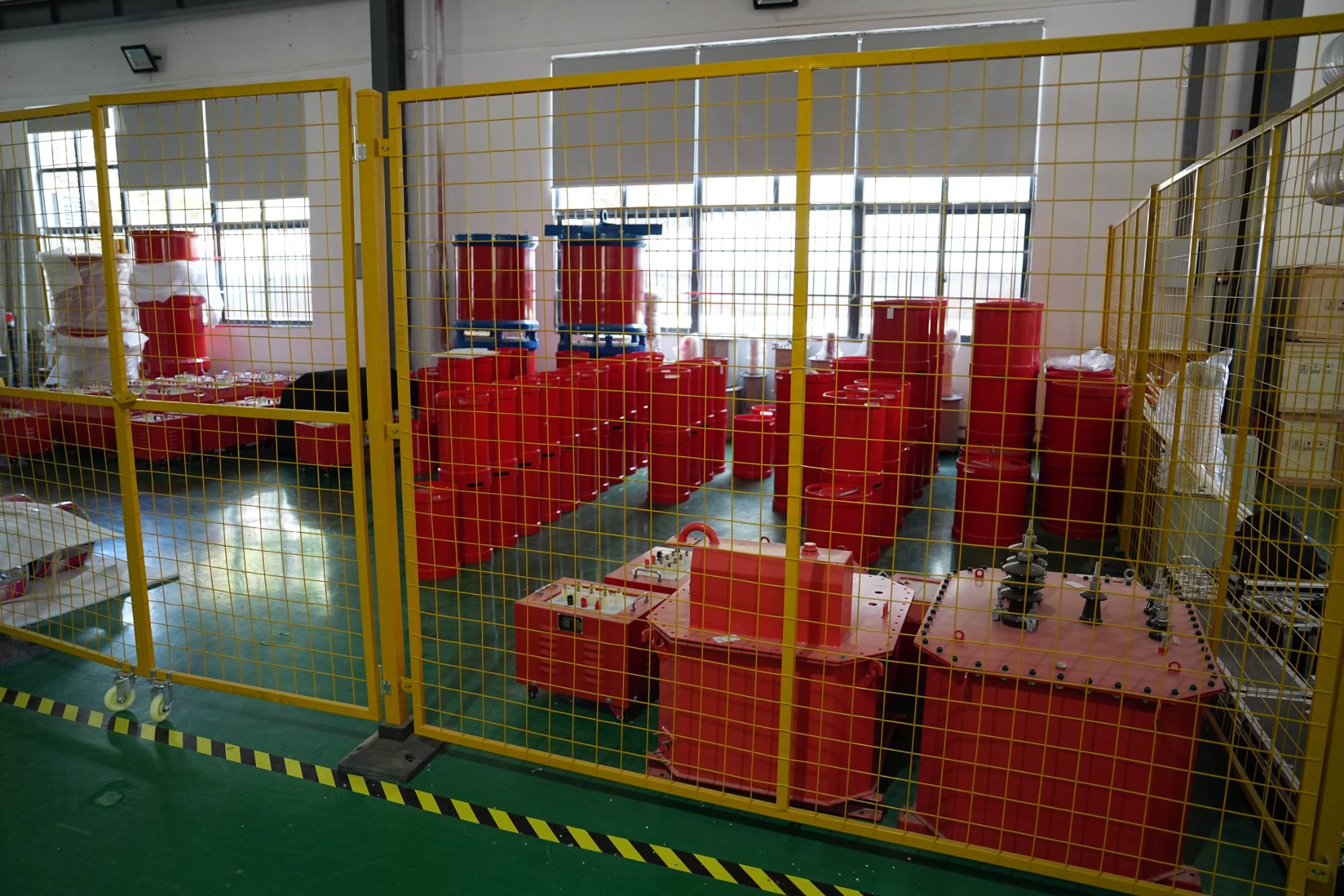
During a test with a series resonance device, if a sudden voltage drop or breakdown occurs, how will the device react?
2025-09-23When a voltage drop (usually referring to non-complete breakdowns like flashovers or intensified corona on the test object) or a complete breakdown occurs during a test with a series resonance device, its reaction mechanism is a core safety feature of its design.The device will immediately and automatically activate multiple protections, reacting extremely quickly to ensure the safety of the test object, the device itself, and personnel. The core principle lies in the unique "constant voltage output" and "detuning current limiting" characteristics of the series resonant circuit.1、Fundamental Principle: Why Can a Series Resonance Device Safely Handle Breakdown?Before understanding the specific reactions, it's essential to grasp its safety foundation:1.Constant Voltage Source Output: During the test, the resonance device adjusts the power supply frequency to bring the circuit (exciting transformer, reactor, test object capacitance) into resonance. At this point, the voltage across th
MORE -
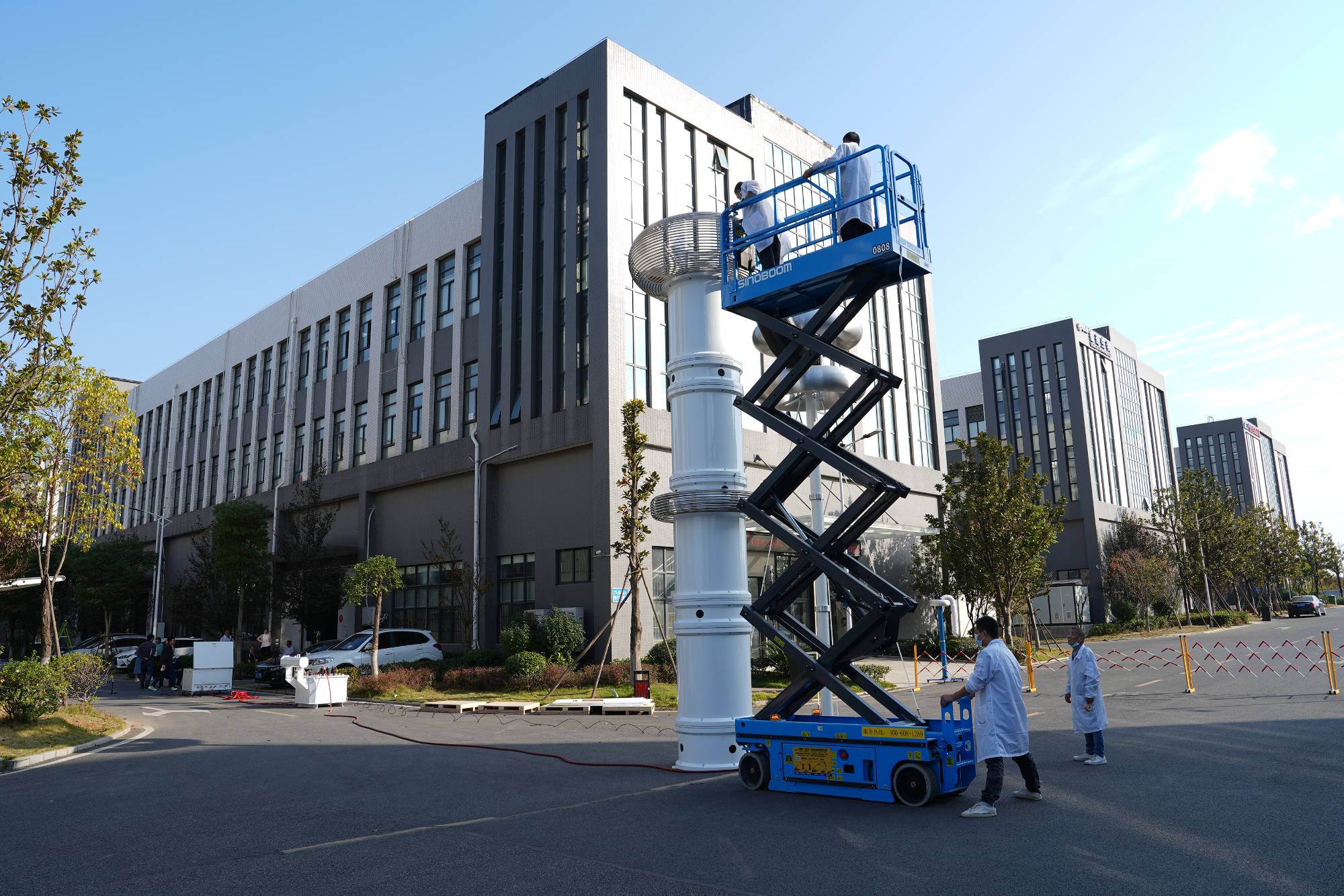
What are the important safety precautions for operating a series resonance test system?
2025-09-23Operating a series resonance test system is a high-risk, high-voltage professional task. Strict adherence to safety regulations is paramount to ensuring the safety of personnel and equipment. The critical safety precautions can be divided into three stages: before, during, and after operation.I. Safety Preparation Before Operation1.Personnel Qualification and Division of Labor:Operators must be rigorously trained, understand the system's principles, performance, and operating procedures, and pass qualification exams.A sole person in charge (work supervisor) must be designated on site. All commands must come from this person. The team must have clear roles: someone for supervision, someone for operating the equipment, someone for connecting/wiring, and someone for monitoring the test object.2.Develop a Detailed Test Plan:Pre-calculate key parameters like resonant frequency, required reactor configuration, and expected test voltage/current based on the test object's specification
MORE -
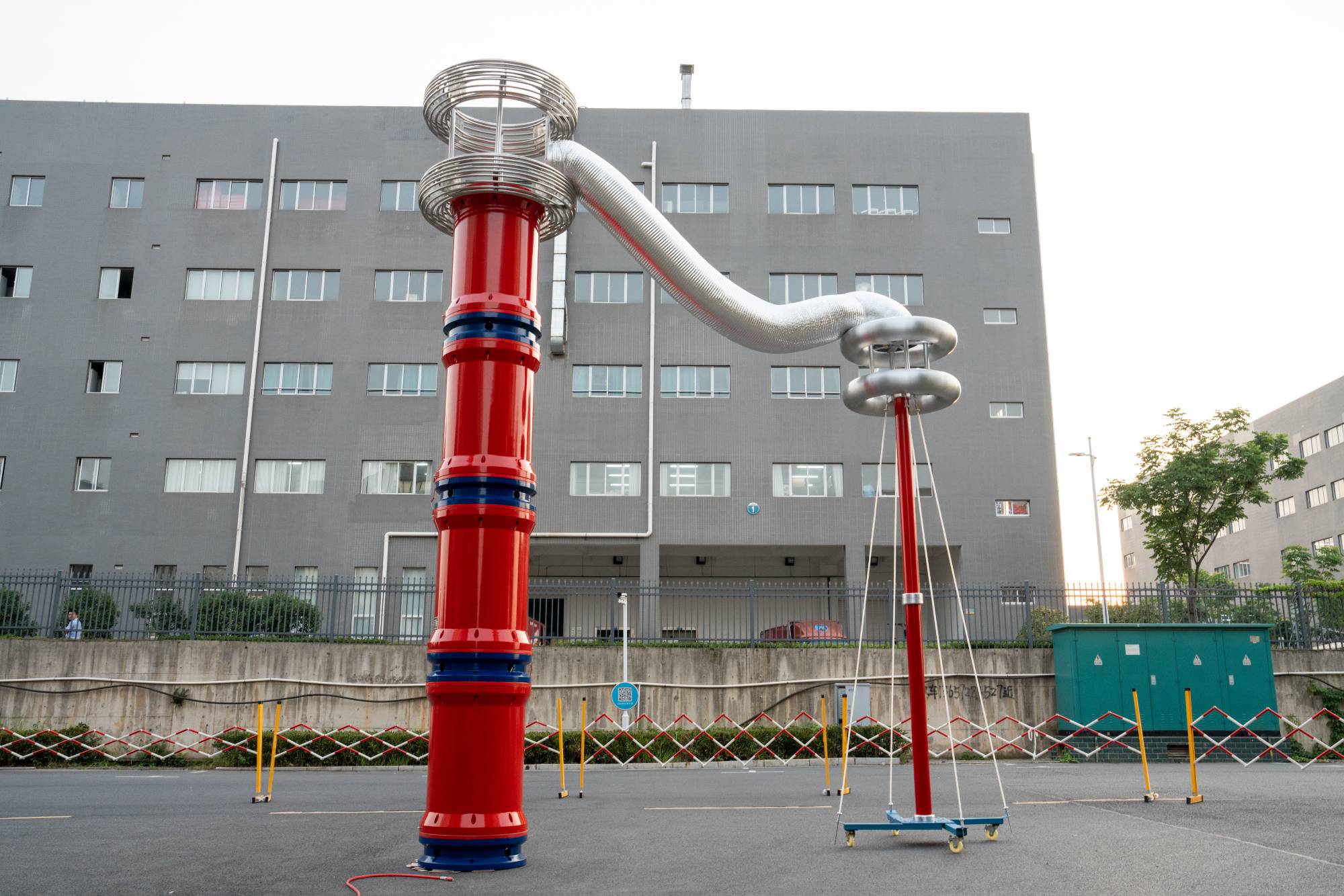
Regarding the phenomenon of series resonance and equivalent circuit power lines
2025-09-23The resonance phenomenon of voltage and current in electrical engineering is well known. In a series circuit with inductance and capacitance, series resonance and electrical parallel resonance occur in parallel at certain resonant frequencies. In a series circuit, this phenomenon corresponds to the condition that the inductance and capacitance resistance are equal. The circuit becomes purely active.As the frequency increases, the inductance and resistance increase, while the capacitance and resistance decrease. At the resonant frequency, their values are equal and cancel each other out, and enter the variable frequency series resonant mode. A similar phenomenon occurs when the current in the power cord changes. Under certain loads (currents), series resonance modes may occur on them. This situation occurs when the capacitive power generated is equal to the inductive power consumed. The power corresponding to this condition is called 'natural'.Calculations show that at the reson
MORE -
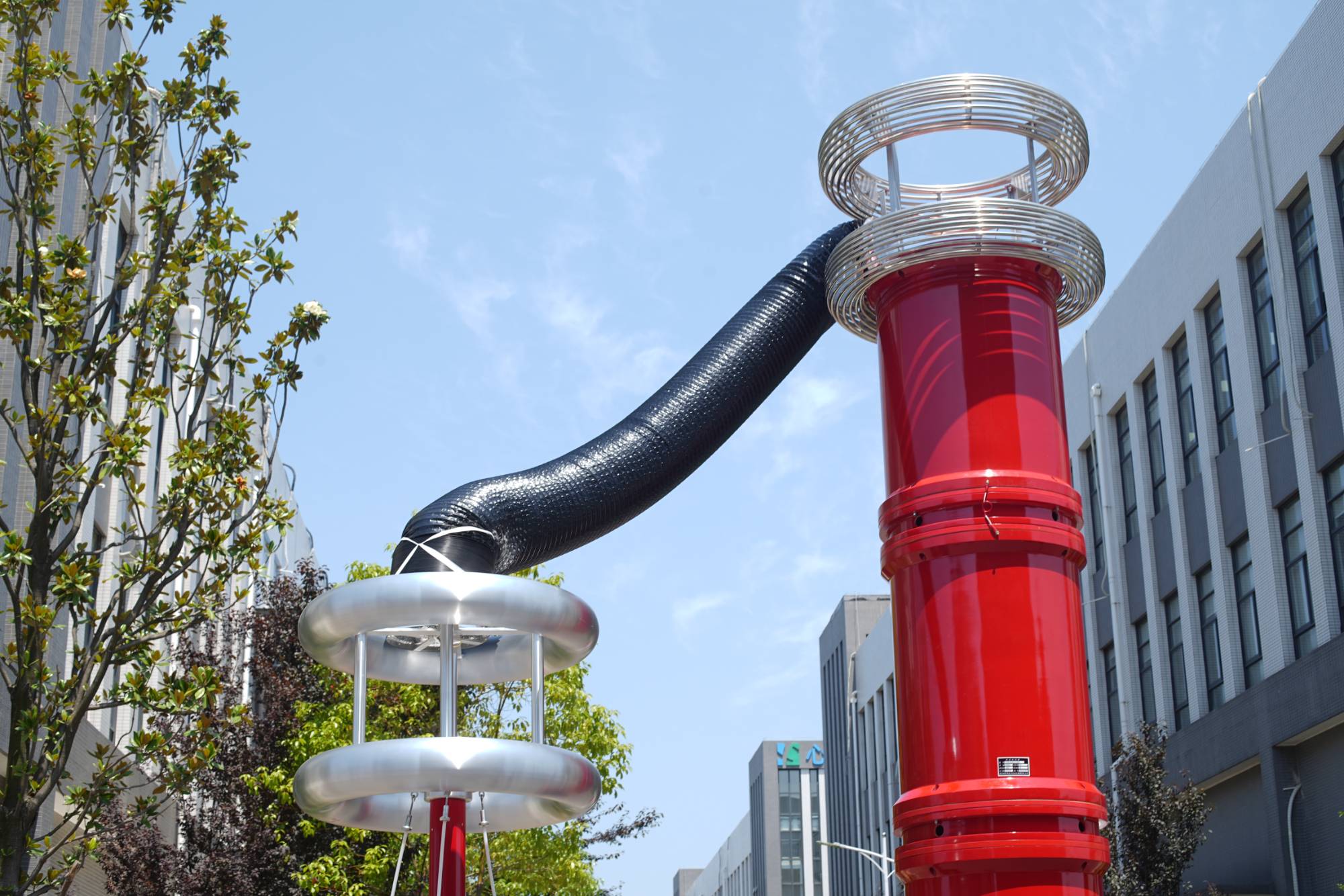
Series resonance and parallel resonance
2025-09-23In AC circuits containing capacitors, inductors, and resistors with series resonance, forced electrical resonance of current and voltage occurs. At a certain frequency of alternating current, inductance and capacitance resistance may be equal (Xt=Xc). This means that the current intensity and applied voltage vary in the same phase, as if there were only Ohmic resistors in a circuit, and the voltage amplitudes on inductors and capacitors are the same but opposite in phase. This phenomenon is called series resonance or variable frequency resonance. The resonant frequency is determined by the formulaThe series resonance phenomenon is used in radio engineering to tune circuits to the desired frequency.When the frequency approaches the resonant frequency C0res [t] when a voltage is applied, there is a sharp decrease in the amplitude of the current intensity in an AC circuit powered by parallel connected capacitors and inductors (ignoring the active resistance due to its small size). Eco ->s
MORE -
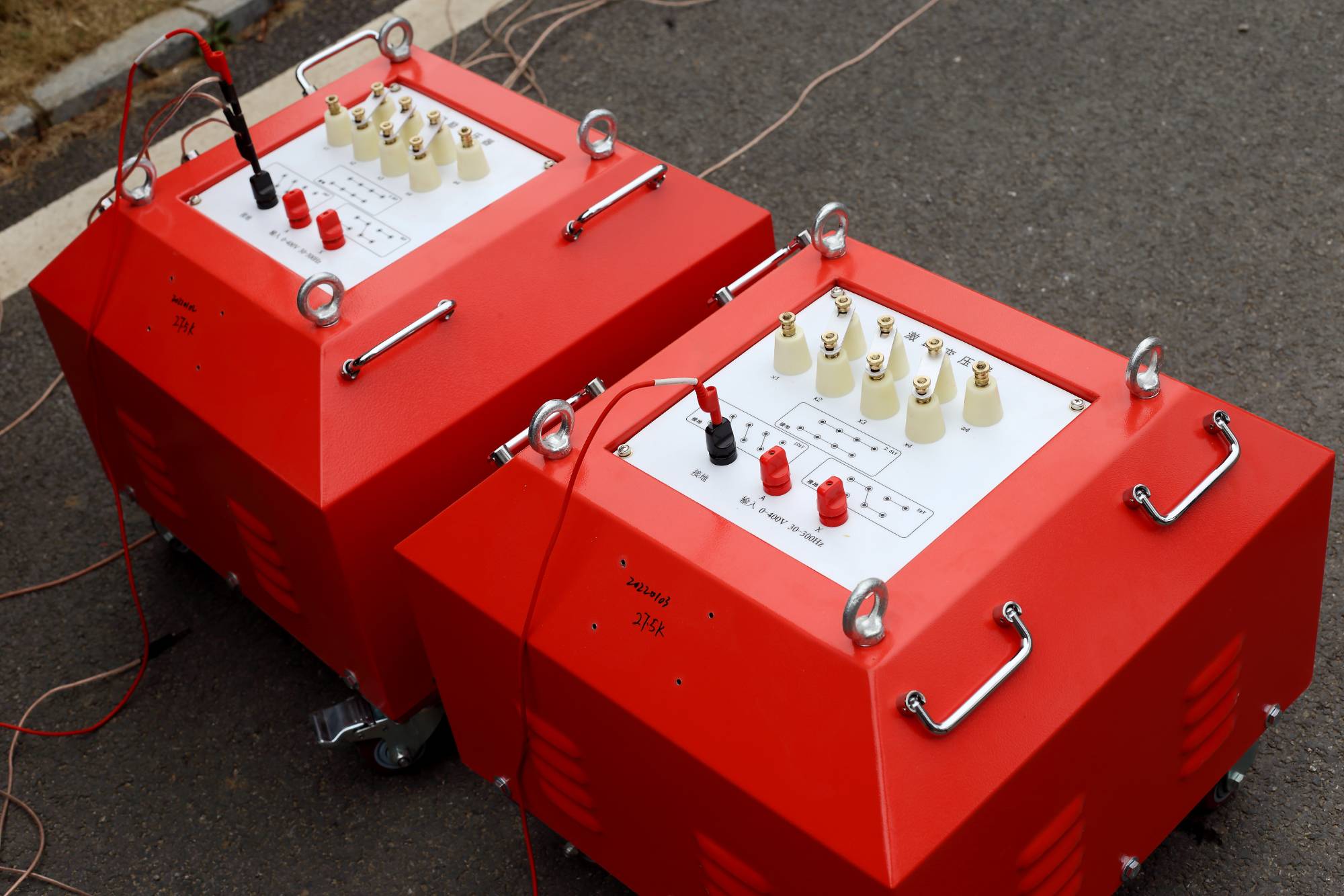
Resistive properties of series resonance
2025-09-23The series RLC circuit consists of a resistor R, an inductor L, and a capacitor C connected in series. As in an ideal series LC circuit without resistance, oscillation with resonant frequency may occur in an RLC circuit, but due to the presence of resistance, this resonant frequency will attenuate.Series resonance (also known as variable frequency resonance) occurs at the frequency with the minimum impedance of the circuit, where the reactance of the circuit is zero. In other words, if the impedance is only resistive without reactance, i.e. its imaginary part is zero, this situation will occur. When the reactance of an inductor and a capacitor is equal, resonance occurs, and due to their opposite signs, they cancel each other out. The following vector diagram shows this situation.The calculator also calculates the Q factor of the serial RLC circuit - a parameter used for series resonant circuits and devices, as well as mechanical resonators. The higher the circuit resistance, the great
MORE









